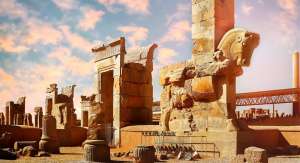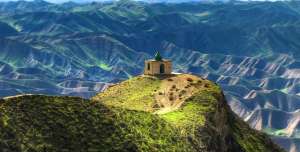Yemen is a country located on the southern tip of the Arabian Peninsula, bordering Saudi Arabia and Oman. Yemen is a country devastated by war and it has had a tumultuous history in the recent past with civil wars raging inside the country. Though it is a country populated by extremely warm and friendly people and with a lot of things to offer culturally, naturally and historically, it is still an extremely dangerous destination right now and visitors are discouraged from visiting.
Yemen Travel Advisory
Do not travel to Yemen due to COVID-19, terrorism, civil unrest, health risks, kidnapping, armed conflict, and landmines.
A civil war continues in Yemen. In addition, terrorist groups continue to plot and conduct attacks in Yemen. Terrorists may attack with little or no warning, targeting public sites, transportation hubs, markets/shopping malls, and local government facilities. Additionally, there is a continuing threat of kidnapping/detention by terrorists, criminal elements, and/or non-government actors. Employees of western organizations may be targeted for attack or kidnapping.
Military conflict has caused significant destruction of infrastructure, housing, medical facilities, schools, and power and water utilities. This limits the availability of electricity, clean water, and medical care. This instability often hampers the ability of humanitarian organizations to deliver critically needed food, medicine, and water. Critical levels of violence, to include armed conflict, artillery shelling, and air strikes, persist throughout the country. There are also reports of landmines throughout Yemen.
Cholera is present throughout Yemen. There is a limited availability of medicine and medical supplies, and adequate medical treatment is unavailable.
There is a very high risk of kidnapping, and detention of U.S. citizens in Yemen, particularly dual national Yemeni-Americans. Rebel groups in Sana’a have detained U.S. citizens, including dual Yemeni-American citizens. U.S. citizens, including dual nationals, have faced difficulty – including lengthy delays – when attempting to depart Yemen.
Some companies outside of Yemen have misrepresented the security situation on the Yemeni island of Socotra and are offering tourist visits there, including by facilitating unofficial and invalid "visas." Only the sovereign Republic of Yemen Government can issue valid Yemeni visas. Private companies or third countries that arrange such visits are putting tourists in danger. U.S. citizens should not travel to Socotra or any other part of Yemen.
10 reasons why you should and should not travel to Yemen right now
1. Dragon’s blood trees on Socotra Island

Socotra is a unique and fascinating island located in the Arabian Sea, 352 kilometers from the coast of Yemen. Detached from the supercontinent Gondwana about 6 million years ago, it is home to animal and plant species that are not found anywhere else on Earth. Its arid, almost lunar plains and plateaus are dotted with trees of quirky shapes and lizards of various colors. The island of Socotra is also populated by some 43,000 people of Somali, Yemeni and Comorian descent who make their living from farming, fishing, and trading in aloe and incense. Subjected to its harsh climate and isolation for several million years, the fauna and flora of Socotra have developed to be unlike any other on the globe. More than a third of plant species and 90% of the island's reptiles are endemic. WWF considers Socotra to be a terrestrial ecoregion of paramount importance for understanding and preserving biodiversity on the planet. It is listed as a World Heritage Site as a nature reserve. Socotra's iconic tree is the dragon tree, which produces the resin called dragon's blood. Its parasol shape with bare branches below and foliage on the top is particularly suited to the semi-arid climate of the island.
2. Castles and mountains of Taiz

Taiz is a city in Yemen located in the southwest of the country, in the heart of the mountains. The city was built at an altitude of approximately 1,400 meters. With more than 600 thousand population, it is the third-largest city in the country. The city has many beautiful old quarters, with typical dwellings, built-in brown bricks, and usually white mosques. The most famous mosque is the Ashrafiya Mosque, located near Mount Sabr and built around 1270. Other memorable buildings are the ancient citadels, and the Governor's Palace erected on top of a 450-meter hill overlooking the city center. Taiz is also considered the capital of Yemeni culture and art.
Cairo Castle in Taiz, Yemen
It is located on the northern slope of Jabal Sabr, where it is based on a rocky hill overlooking the city, and it is said that this area where the castle is located was originally the old Taiz and was later called Cairo. The first part is called "Al-Adina," and it includes hanging gardens in the form of terraces constructed on the mountain slope, a water dam, basins sculpted and constructed in one of the mountain's façades, as well as the palaces that are scattered around it surrounded by towers and parks. The house of the emirate and the last one was for the king to the guest palace, and it is for receiving guests, not to mention the tunnels that connect the palaces to the outside with tunnels and secret corridors. In the second part of the castle, "the Maghreb area," there is a number of palaces, guard towers, granaries, and water tanks. As for the castle wall, it is considered one of the essential pieces of historical evidence on the history of the city of Taiz, as it was built in the past to contain all the neighborhoods of the old city. Unfortunately, most parts of the city, including this castle, were destroyed as a result of the war.
3. Beaches and volcanos of Aden

Aden is the fourth biggest city in Yemen. The city was one of the most useful seaports of the region under the British Empire. Because of that, the influence of British rule is still noticeable. For instance, in The Crescent Hotel, artifacts and other things are exhibited as a reminder of the Queen's visit to the city in 1954. Now, in the presence of the civil war, the city functions as a temporary capital of the state. Water tanks of Alsahareej, Sira Fortress, Shamsan Mountain, and Little Ben are the best examples of Aden's touristic destinations. The old Zoroastrian Temple is another worth-to-visit place of Aden. Also, the city is famous for its warm beaches and dead volcanos. Elephant Beach and Gold more Beach are the most attractive beaches of Aden.
4. Palaces and Islamic art in Sanaa

Sanaa is the capital and largest city in the country. It is worth traveling to the city due to its beautiful Islamic architecture and old palaces. The old part of the city was acknowledged as a World Heritage. Ghumdan Palace, Great Mosque, and Samsarat Al Mansurah are considered the main attractions of the city. The history of the Great Mosque dates back to the times of the Islamic prophet. In the charming Salt Market of Sanaa, tourists can buy salt, goods, and other local products.
5. Nature and architecture in Hutayb

Hutayb is a town in western Yemen. The town is famous for its beautiful nature and mountains, which are decorated by antique castles and mosques at the top of the mountains. This tranquil town of the country is mostly preferred by simplicity and architecture lovers. Regrettably, like other parts of the country, Hutayb's tranquillity is disturbed, and the town suffers very much as a result of the Yemen war.
6. Civil war

Yemen has been torn by civil war since July 2014. The context of the "Arab Spring" of 2011 favored the outbreak of the civil war on July 9, 2014. The forces of the National Transitional Government are led by President Hadi, recognized by the international community, and militarily supported by a foreign military coalition led by Saudi Arabia. They oppose the revolutionary coalition formed, until December 2017, by Zaydi Houthi militias and forces loyal to former President Saleh, supported by Hezbollah and Iran. These clashes are taking place in one of the poorest countries in the world, devoid of infrastructure, and which must import 100% of its resources in rice, tea, and sugar, as well as 90% of its wheat. The population of Yemen, 70% made up of young people under the age of twenty-five, is in a dire humanitarian situation.
7. Crime and kidnapping

Due to ongoing civil war, crimes, as well as disappearances and kidnappings, are getting common in Yemen. That is why most countries have a piece of negative travel advice to Yemen. This also impacts the tourism industry of this poor country.
8. Terrorism

The bombing of public and private places, attacks on airplanes are very frequently happening in Yemen. Is it safe to travel to Yemen under these circumstances? Of course, not! When you think about where is Yemen and how to travel to Yemen, you should think of this issue, as well.
9. Health risks

Because Yemen is one of the poorest countries on the planet, its health system is not well-developed. Unfortunately, the Yemen war negatively impacts this vulnerable sector, too. As a result of these factors, the citizens are not able to get proper healthcare, which causes the outbreak of worse diseases such as cholera, coronavirus in Yemen.
10. Landmines

According to Yemen news agencies, every year, at least a hundred civilians are killed by landmines. Further, these results in the blockage of humanitarian aids to the country. It is very dangerous to travel to Yemen, even for humanitarian workers. So, tourists can not be the topic of the question to visit the country. I hope when the war ends, and everything comes back into a routine, we can travel and enjoy the beauty of Yemen.








